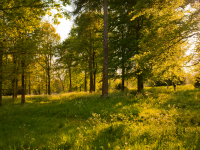For those farmers engaging in succession planning, it’s well known that farmland in the UK is eligible for Agricultural Property Relief (APR) which provides 100% relief from Inheritance Tax (IHT) and that Tenancies under the 1986 Agricultural Holdings Act, are afforded 50% Inheritance Tax relief.
What remains less-well known is that land which is turned into wetland or woodland under future schemes could be liable for IHT at 40% if they do not qualify for APR.
Qualifying for APR
Environmental grant schemes promote tree planting, and it is commonplace for environmental organisations to advocate for the creation of new woodlands on farmer’s land, but the tax laws have not kept pace with these environmental activities.
There are currently two ways to qualify for APR, these are:
- If your woodland is a short rotation coppice which is harvested at intervals of less than 10 years for markets such as biomass fuel.
- The woodland is ancillary to farmland including woodland shelter belts, game coverts, coppices grown for fencing materials on the farm and clumps of amenity trees or spinneys.
The IHT manual (IHTM24030) states: “provided the woodland is occupied as part of the agricultural operation or even ancillary to the farming then it is appropriate to make a claim for APR… it will be necessary to show evidence of this (such as maps, accounts and notes of how the woodland is used)”
The suggestion is that newly planted woodlands under a grant scheme, taking land out of agricultural use and specifying that it must not return to agricultural use within 20 to 30 years, cannot qualify as agricultural property and therefore does not qualify for APR.
Other types of relief
If you have owned the wood for two years before you die and have used the woodland to make a profit you could qualify for Business Property Relief (BPR). Sole Traders encounter few issues, but partnerships and limited companies must have the woodland recorded as an asset in their accounts to fully benefit for BPR. If the woodland is not a partnership asset, then BPR is only available on 50% of the value.
If a tenant manages the woodlands on a commercial basis growing timber to sell, this is not farming and you will not qualify for APR. Equally, if you are a landlord, not the trader, you cannot qualify for BPR.
The third relief available for woodlands is Deferral relief and an election for relief must be made by the person liable for IHT, within two years of the death or such longer time as the Board may allow. It is only a deferral of the due tax. This relief is because trees may take several generations to mature and would otherwise be taxed on each successive death.
When neither APR or BPR are available it may be possible to elect to exclude the value of the trees or under wood, but not the value of the land itself, from the value upon which inheritance tax is chargeable. At the point the timber is felled or sold the proceeds are taxed as if they had formed part of the estate at 40%.
This is less favourable and should only be used if BPR and APR are not available to you.
For further information contact our Agriculture Department on 01242 801748 or get in touch via our website.
